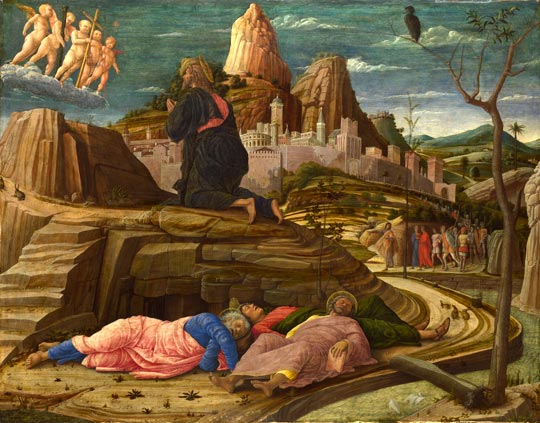Around the San Zeno triptych in Verona
From 1456 to 1459, Mantegna devoted himself to the monumental altarpiece commissioned by Gregorio Correr, abbot of the Benedictine monastery of San Zeno in Verona. The main panels are still in place on the high altar of the church, while the predella elements are divided between Tours and Paris. To place his personages in an all'antica vestibule running along the whole width of the main register, Mantegna took as his model Donatello's bronze altar in the Basilica of Sant'Antonio in Padua. He pushes illusionism to such an extent that he makes the natural light of the edifice, falling from a window to the right, correspond to that of the painting's fictive space, and juxtaposes the columns of the carved frame with the pilasters of the painted loggia.
The three predella panels show his fascination for the art of Flemish masters, examples of which he could have seen in Venetia: as in the Adoration of the Shepherds he multiplies realistic notations. The deep sense of nature transpiring here, the gentleness of some personages owe much to Giovanni Bellini, to whom Mantegna is still very close. But after this moment of intense poetry, he returns to a more austere and cerebral style, adopted a few years earlier in the Agony in the Garden in London.
Andrea Mantegna (Isola di Carturo, circa 1431 - Mantua, 1506)
The Agony in the Garden
circa 1453-1454
Wood; H. 63 cm; W. 80 cm
London, National Gallery, inv. 1417
© The National Gallery, London






